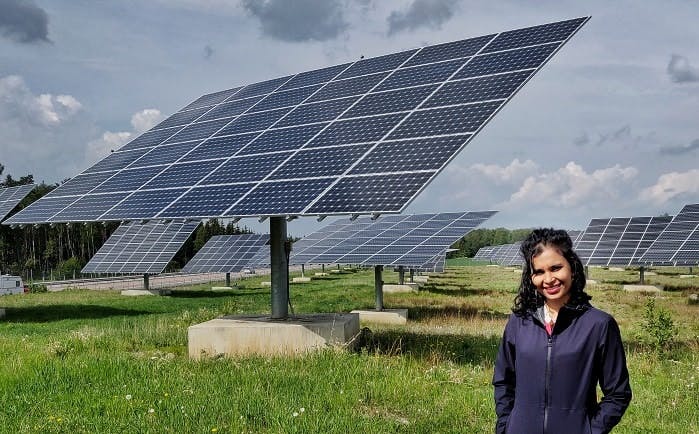InnoBlog: Role of women in energy

“What is a girl like you, doing in a plant like this”.
Not so long ago, I worked in Southeast Asia (ASEAN) as an engineer in petroleum refining and power industry. My role involved communicating with several plant managers to ensure that the wastewater is treated well enough before being exposed to the environment. I had no difficulty in performing well during the interviews for the role or even during the formal training for it. However, what I did not anticipate is that when I would start working our senior male clients would be surprised that a female field engineer consults them in a hard hat and blue jumpsuit.
Some facts and studies
According to IRENA’s 2015 survey among private energy companies, women represent 35% of the workforce, with roles predominantly in the administrative force. Only 30% of the managerial positions are held by women [1]. Another report by Tomson Reuters state that the energy sector ranks last for gender diversity on corporate boards compared to other industries [2].
While this can seem as a random collection of facts and figures, it is important to talk about the potential that can be achieved by having a diverse group of employees at an organisation. Examples from the energy sector specifically, state that integrating women in the workforce has a greater productivity, return on investment and customer satisfaction [3]. Additionally, having a broad diversity improves the quality of ideas and work that is being put in.
A study performed by McKinsey Global Institute states that despite women representing 50% of the global working-age population, only 37% of the global GDP is generated by women. 75% of the world’s unpaid jobs are performed by women and if women play an identical role in the labour market as men, the global GDP for the year 2025 can potentially increase by 26% [4]. Majority of this global disparity in workforce comes from lack of energy and economic advancement in developing countries. When lack of electricity forces humans to perform menial tasks that can otherwise easily done by modern technology, these tasks predominantly fall on women to perform [1]. This reduces the potential for women to study or work outside their homes. While this has been acknowledged as a problem, it has not been associated with the economic potential empowering women can have on the economy.
Europe vs world
The same report by McKinsey states the gender parity in western Europe is 0.71, second only to North America and Oceania region [4]. When I started my Master’s in Europe, I did find a sharp difference in the attitude towards women in the energy sector here compared to my previous experience in Asia. Despite the male-female ratio still not being 50-50, what I have learnt here is the potential that I can personally reach, without being stereotyped for being a woman in the energy industry. I can call myself lucky to not continue experiencing difficulties, however there is still a lot that needs to change in Europe and rest of the world, to promote females in the energy industry.
The experience that I am gaining here motivates me to work harder, striving towards a managerial position, so as to empower and educate other regions around the world, about the potential that is being wasted. The renewable energy industry is at the peak of its growth, and by properly engaging in cultural and gender diversification, this sector can be the pioneer in influencing other sectors to do the same. In no way am I saying women should be preferred over our male colleagues, but the opportunities must be equal for both, and the obstacles associated with stereotyping women in workforce must be removed. While some females take the workplace bias as a motivation to change the status quo, for others it might be the reason they choose to change industry or stay at home. This is by no means conducive for a growing economy.
Importance of awareness
At the end of the day, bridging the gender gap is not a short-term goal that can be achieved immediately. Government, policy makers, industries and academia must come together to educate young and old alike, about the importance of equality and the rights and responsibilities held by every human being. No aspiring male or female should think of their gender before choosing the career track they are passionate to pursue. Building the trust and policies to enable this freedom is what we must collectively aim at, as a society.
As Sanna Marin, the Prime Minister of Finland puts it, “We are a 5-party coalition with all women leaders. It looks different than we are used to, but I hope that in the future it doesn’t get as much attention, because it should be seen as normal”.
[1] USAID, “Advancing gender in the environmnet: Making the case for women in the energy sector” IUCN, 2018
[2] L. Hasnan, “ASEAN needs more women in the energy sector,” 13 November 2019. [Online]. Available: https://theaseanpost.com/article/asean-needs-more-women-energy-sector. [Accessed 26 January 2020].
[3] S. A. Grogan L, “Rural electrification and employment in poor countries: Evidence from Nicaragua,” World Development, vol. 43, pp. 252-265, 2013.
[4] McKinsey Global Institute, “The power of parity: How advancing women’s equality can add $12 trillion to global growth”, McKinsey & Company, 2015.
by Malavika Venugopal, Master’s in Renwable Energy

